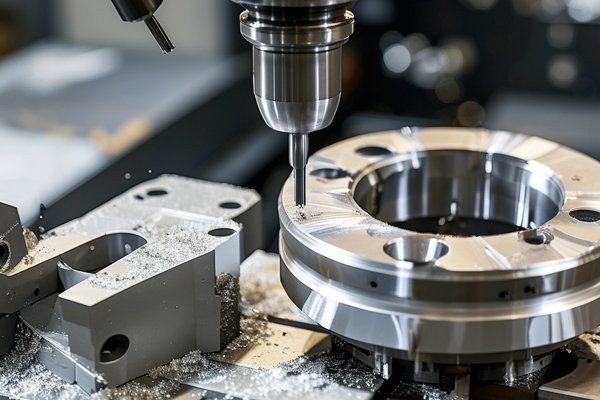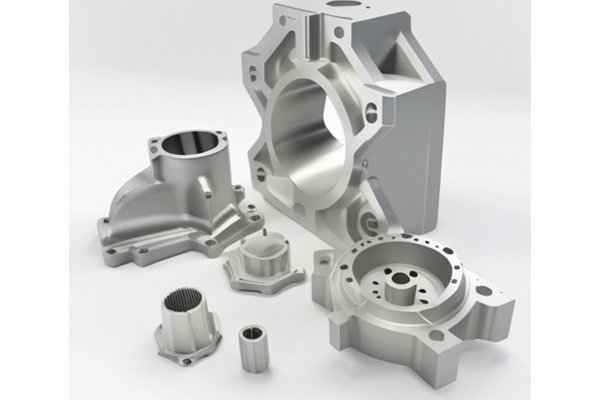Opening: A Look into CNC Brass Machining
Did you know that brass has been utilized for thousands of years, dating back to ancient civilizations? Today, the use of brass in manufacturing has evolved dramatically, particularly with the advent of Computer Numerical Control (CNC) machining. This technology has revolutionized the production of brass components, enhancing both efficiency and precision. But what makes CNC brass machining so special? In this comprehensive blog post, we will delve deep into the intricate characteristics of CNC brass machining and how they significantly influence the production processes.
Understanding CNC Brass Machining
CNC brass machining refers to the process of using computerized controls to manipulate brass and create components with high precision and a superior finish. Brass, an alloy of copper and zinc, is favored in various industries for its malleability, corrosion resistance, and excellent electrical conductivity.
The CNC machining process itself involves the use of automated machines, which are programmed to carry out various operations like cutting, drilling, milling, and turning. This automation minimizes human error, enhances consistency, and can produce complex geometries that are difficult to achieve with traditional machining methods.
Core Characteristics of CNC Brass Machining
CNC brass machining is synonymous with precision. The technology allows for intricate component designs with tolerances as tight as 0.002 inches. This degree of accuracy is essential in applications such as electronics, aerospace, and automotive manufacturing, where components often need to fit together perfectly.
Solution: To maintain precision, proper calibration of CNC machines is vital. Regular maintenance checks and the use of precise measuring tools like calipers and micrometers can help ensure that the dimensions meet the required specifications.
One of the remarkable attributes of CNC brass machining is its versatility. Designers can create a plethora of shapes and sizes based on digital models. Change in design can be swiftly implemented without the need for additional tooling or setups.
Solution: Investing in CAD (Computer-Aided Design) software is beneficial since it enables designers to visualize their concepts in a digital environment and make modifications without having to physically create prototypes.
CNC brass machining significantly enhances manufacturing speed. The automated nature of CNC operations reduces cycle times, allowing for rapid production of parts. Furthermore, the ability to run machines continuously, even during non-working hours, maximizes output.
Solution: Streamlining workflows and adopting lean manufacturing principles can further enhance efficiency. Utilizing multiple CNC machines for concurrent operations reduces bottlenecks in production.
The quality of the finished surface in CNC brass machining is exceptional, often requiring minimal post-processing. Various machining techniques, such as high-speed machining and advanced tooling, contribute to achieving a superior surface finish.
Solution: Employing the right cutting tools, along with optimal cutting speeds and feeds, is essential to achieve the desired surface finish. Businesses may also consider surface treatments like polishing or plating to enhance the aesthetic appeal and functionality of the finished components.
Brass’s unique properties make it highly suitable for a wide range of machining applications. Its machinability is significantly higher than that of steel, allowing for faster production rates and longer tool life.

Solution: Utilizing the correct grade of brass for specific applications is crucial. For instance, free-machining brass alloys often contain lead, enhancing their machinability at the expense of corrosion resistance. Companies must evaluate their production needs and select the appropriate material accordingly.
While initially perceived as an expensive option, CNC brass machining can be quite cost-effective in the long run. The reduction in labor costs, combined with savings from material efficiency and waste reduction, can offset the initial machinery investment.
Solution: Conducting a thorough cost analysis, including the lifecycle costs of the CNC machinery and its total impact on production costs, is vital for businesses deciding to invest in CNC brass machining technologies.
Challenges in CNC Brass Machining
While CNC brass machining offers numerous advantages, it is not without its challenges. Understanding these issues can help manufacturers devise effective strategies to mitigate them.
CNC machining tools can wear out quickly, especially when working with harder brass alloys. Frequent tool replacements can lead to increased costs and downtime.
Solution: Regular monitoring of tool performance and utilizing advanced tool materials, such as carbide or ceramic, can increase the lifespan of machining tools.
Machining brass generates substantial heat, which can lead to thermal expansion and altered tolerances if not managed correctly.
Solution: Implementation of effective cooling systems or selecting appropriate cutting speeds and feeds can help dissipate heat during machining operations.
The process of machining can sometimes introduce residual stresses in brass components, leading to warping after machining.
Solution: Practicing stress-relief techniques such as vibration stress relief can help alleviate residual stress prior to the final inspection.
: Emphasizing the Importance of CNC Brass Machining
CNC brass machining embodies a synergy of technology and material science, creating a landscape for industrial innovation and efficiency. From precision engineering and design flexibility to cost-effectiveness and superior surface finishes, the advantages of CNC brass machining are profound.
Understanding its core characteristics equips manufacturers to overcome challenges effectively and optimize production processes. Investing in CNC machining technology is not merely a decision for today; it is a leap towards future-ready manufacturing, allowing businesses to remain competitive in ever-evolving markets.
As industries continue to embrace automation and digital solutions, CNC brass machining will undoubtedly play a pivotal role in shaping the future of production. Hence, businesses need to consider these insights as fundamental in their quest for excellence in machining processes.
In reflecting on the significance of this topic, we urge readers to think about how they can leverage the advantages of CNC brass machining in their operations to enhance performance and achieve remarkable results. The future of manufacturing is bright, and it starts with informed decisions today.






